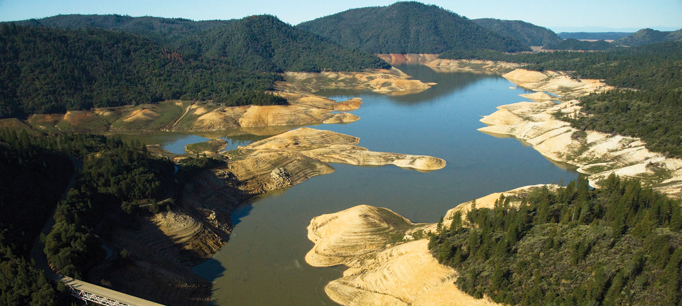This is part of a continuing series on the impact of the drought.
The drought has brought the term storage to the forefront of political debate over how to manage water in California. Water scarcity during this drought is perceived by many, including prominent elected officials, as a failure of government to build sufficient storage.
For most, storage refers to water kept in reservoirs behind dams. People tend to forget that we also store water underground, in the state’s many aquifers. And during a drought, this groundwater storage is usually much more important.
Managed well, groundwater is the state’s best hedge against drought. The volume of potential groundwater storage in California is several times greater than surface storage. On average, about 35 percent of annual water use for cities and farms comes from groundwater, and 60 percent or more in some important agricultural regions such as the Tulare Basin and the Central Coast. During a severe drought such as this one, when groundwater pumping increases, this share can go up significantly. But groundwater is not easing the effects of this drought as much as it could because we don’t manage it as drought storage.
A fundamental principle of sustainable groundwater management is that you allow water to accumulate in aquifers during wetter years so that you can pump it out during the dry years when surface water sources are insufficient. In most of California’s main agricultural areas—especially the southern Central Valley and parts of the Central Coast—the total water demands are so great that we have stopped allowing groundwater levels to recover during the wetter years. Instead, we are “mining” groundwater, treating it like oil and gas, extracting it as if it was a non-renewable resource never to be replaced.
This mining—or overdraft—reduces the available supply of groundwater during dry years. It raises the costs of remaining supplies, as wells need to be drilled deeper and electricity bills rise because water has to be pumped from deeper depths. Unsustainable pumping also creates a host of other problems, including dewatering of rivers and wetlands that support fish and wildlife as well as land sinking—or subsidence—that damages roads, bridges, canals, and flood control infrastructure.
Some of California’s large urban areas—including much of Southern California and Silicon Valley—provide valuable lessons on how to move toward more sustainable management of groundwater basins. In these areas, acute groundwater overdraft spurred groundwater users—often with the aid of the courts or the state legislature—to develop management schemes that work. These groundwater basins are overseen by court-appointed water masters or special management agencies that can collect fees, monitor use, and allocate pumping rights. Most important, they can compel users to store water during wet times, so it is available when drought strikes.
A silver lining of the current drought is that it has brought focus to how we manage groundwater, the other water storage in California. Innovative proposals for comprehensive reform are coming from the Brown administration and from grassroots efforts orchestrated by the Association of California Water Agencies and the California Water Foundation. These proposals have the common goal of creating sustainable groundwater management by
-
providing local agencies the tools necessary to manage groundwater sustainably, and -
giving the state the power to ensure that these standards are achieved if local agencies fail to act.
Now is the time to move forward on this issue, while the consequences of groundwater overdraft are at the center of debate and impacting so many.



